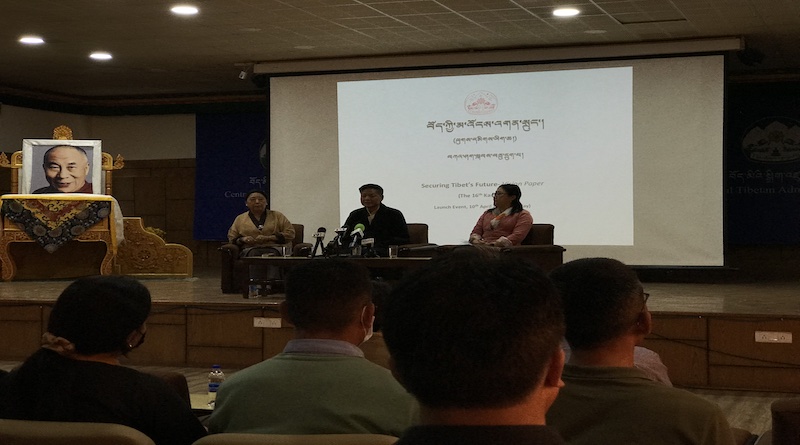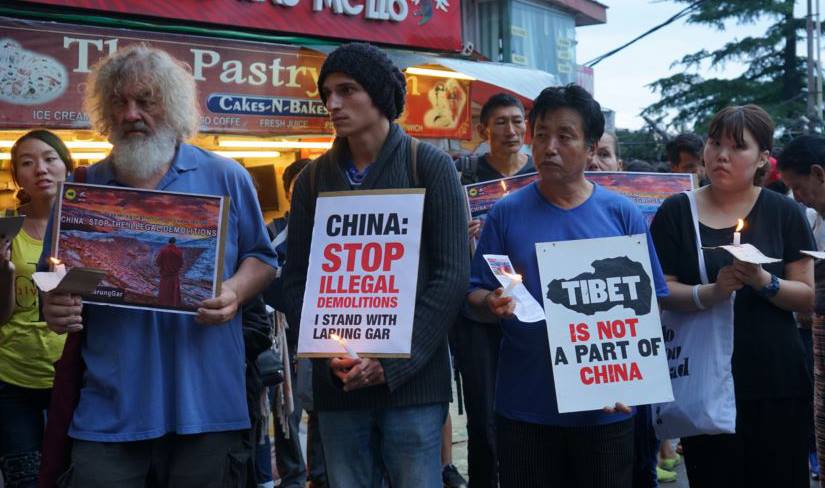CTA launches vision paper titled ‘Securing Tibet’s Future

DHARAMSALA, 10 April: The political head of the Tibetan people, Central Tibetan Administration’s (CTA) President Penpa Tsering said that creating new momentum and opportunities for stalled Sino-Tibetan dialogue is Kashag’s(Cabinet) topmost priority.
The CTA President made the remarks as he launched the 16th Kashag’s(Cabinet) vision paper titled ‘Securing Tibet’s Future’ today.
“This Kashag is fully committed to following the vision and wisdom of His Holiness the Dalai Lama in finding a non-violent, mutually beneficial, negotiated, and lasting solution to the Sino-Tibet conflict through the Middle-Way Policy,” read a message from the CTA President in the vision paper.
“Therefore, creating new momentum and opportunities for dialogue is our top-most priority,” the 35 pages vision paper said declaring the CTA’s middle-way approach as the way forward to resolving the Sino-Tibet conflict.
“Even in the face of existential attacks, including the suppression of our people and the destruction of our distinct identity, we remain committed to resolving the long-standing Sino-Tibet conflict through non-violence and negotiation,” the CTA Cabinet’s vision paper said.
However, it added that the resumption of the dialogue depends on the Chinese leadership and their political will to resolve the conflict.
“Even though the Kashag wishes to resume contact with the Chinese government, it depends on whether the Chinese leadership has the political will to resolve the conflict. If the Chinese side sincerely proposes dialogue to find a lasting solution to the conflict, we stand ready to respond. Until such a solution is found, we will meticulously examine the situation inside Tibet and point out the wrong policies that need to be stopped or rectified.”
As the last Sino-Tibetan Negotiation was held over a decade ago, the CTA President said that it was due to the lack of political will and commitment from Beijing.
“Unfortunately, the lack of political will and commitment from the leadership of the People’s Republic of China led to the stalling of the dialogue that took place between 2002-2010.”
The Kashag has acknowledged that their “work as representatives of the Tibetan people and in securing the future of Tibet is more timely and crucial than ever” as it called out China for its increased efforts to destroy Tibetan culture and identity through the imposition of draconian measures, China’s forced colonial boarding schools in Tibet, ban on teaching all subjects in the Tibetan language, China’s increasing control over monasteries, China’s mass stealing of DNA from Tibetans and the politicisation of Tibet’s tradition of reincarnation among others.
President Penpa Tsering further said that the vision paper will act as his cabinet’s blueprint in their efforts for resolving the Sino-Tibet conflict, looking after the welfare of the Tibetans in exile and enhancing the CTA’s capacity.
The 16th Kashag took over the reins of CTA on 27th May 2021. In August 2021, the Kashag dissolved the Task Force on Sino-Tibetan negotiation with immediate effect and instead set up a strategic planning committee to replace it.
Apart from the CTA President, others in the committee include former envoy of His Holiness the Dalai Lama Kelsang Gyaltsen along with former CTA Ministers Dongchung Ngodup and Tempa Tsering as advisors and Secretaries of the CTA’s Department of Security, Department of Information and International Relations (DIIR), Tibet Policy Institute (TPI)and Kashag’s Political Secretary.
So far, 32 Task Force meetings were held since the first one in 1999. Presided over by then Sikyong Dr Lobsang Sangay, the last Task Force meeting was held in Dec 2019.
The Task Force on Sino-Tibetan Negotiation was constituted in 1999 to help recommend policy matters and strategies to find a peaceful and mutually acceptable negotiated resolution to the issue of Tibet.
Nine rounds of talks were held between the envoys of His Holiness the Dalai Lama and representatives of China’s United Front Work Department since 2002.
During the course of nine rounds of Sino-Tibetan talks, the Tibetan side had presented to the Chinese leadership a Memorandum and Note seeking genuine autonomy for Tibet as enshrined in the Chinese constitution and Law on Regional National Autonomy.
The ninth and last round of talks was held in 2010 and in 2012, the envoys of His Holiness the Dalai Lama resigned from their positions citing the overall deteriorating situation inside Tibet and “lack of willingness and sincerity” from the Chinese side.




